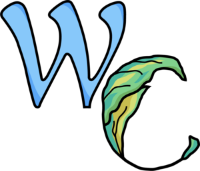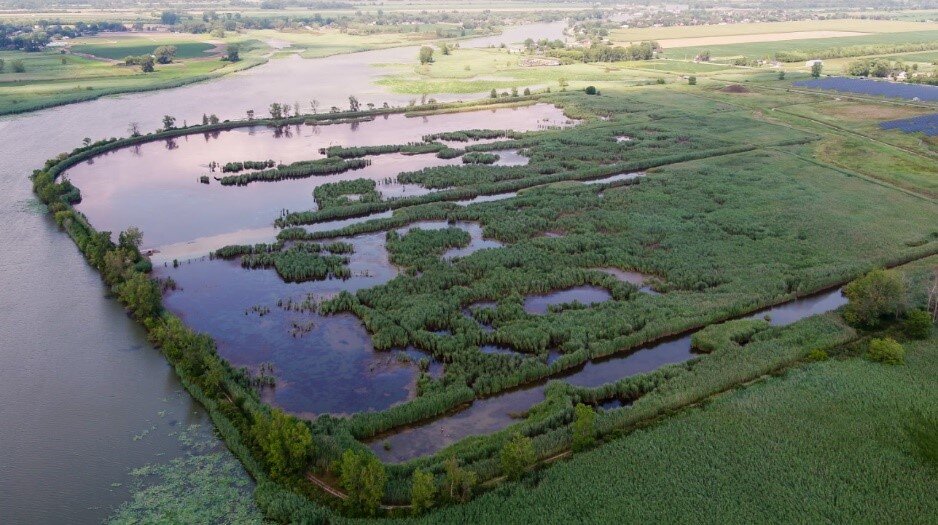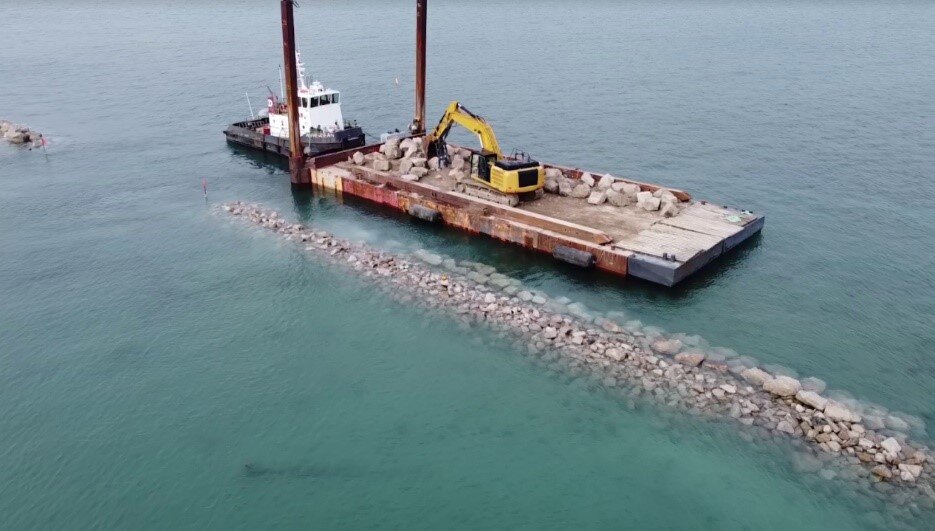by Niharika Bandaru
Water is life – a commonplace adage among water lovers and otherwise. In the Windsor-Essex region, one can revel in the glory of not one but three freshwater sources – Lake St. Clair, the Detroit River, and Lake Erie. Earth Day is on April 22nd, and every year, community members assemble to plant trees, clean up streets and beaches. The 2021 Earth Day theme by Earthday.org of “Restore Our Earth” examines natural processes, emerging green technologies and innovative thinking that can restore the world’s ecosystems. However, in a time of cancelled public gatherings and community events, we head to virtual sources of getting involved in preserving our favourite blue strait. Enter the Detroit River Canadian Clean-up (DRCC), an organization that implements the Remedial Action Plan, or cleanup plan for the Detroit River. It does so on behalf of a community-based partnerships between the government, local industries, researchers, environmental organizations, and citizens working together to protect, restore, and enhance the Detroit River ecosystem.
This year, Windsor of Change interviewed Jacqueline (Jackie) Serran, the Remedial Action Plan Coordinator at the DRCC, about Earth Day celebrations, the work they do, and how we can continue to be involved in protecting our River.
The interview has been edited and condensed for clarity.
Why is the Detroit River important?
Jackie: Ecologically, the Detroit River has a lot of benefits. One of the things that's interesting about the Detroit River, is that it’s actually part of two migratory bird flyways. A lot of migratory birds use the Detroit River and the habitat of the Detroit River. A lot of waterfowl actually stop over in the lower Detroit River, especially Fighting Island, and use the habitat on their migrations down south. The River also has a highly diverse fish community. Many people flock here every year in order to fish for walleye, bass, musky, perch, and silver bass. The Detroit River also has a designated critical habitat for species at risk including Northern Madtom.
Additionally, we in the Windsor-Essex region are dependent on drinking water which is largely sourced from the Detroit River. So, it is in our best interest that the river is as clean as possible, because ultimately that is the water that we are drinking.
Can you give us a brief history of the Detroit River since the first Earth Day in 1970? What events stand out?
Jackie: To give you a bit of a background - in 1987 under the Great Lakes Water Quality Agreement, they identified Areas of Concern which are basically very degraded areas of the Great Lakes. Under that Areas of Concern program, they further defined what we call Beneficial Use Impairments/Beneficial Uses (BUIs). 43 areas in the Great Lakes were considered Areas of Concern because one or more of those Beneficial Uses were considered impaired. The Detroit River Area of Concern is one of them.
Also, on the very first Earth Day in 1970, a protest in the form of a funeral for the Detroit River was held in Windsor, Ontario. Protestors laid wreaths on the very polluted waters and sang about giving “Earth a Chance”. We’ve come a long way since then.
A list of the Beneficial Use Impairments on the Canadian side of the Detroit River and their statuses as of June 2020. (DRCC)
How far have we come since 1970?
Jackie: When we initially started, the status of the 14 BUIs in the Canadian side of the Detroit River was that 12 were impaired, one required further assessment and one was not an impairment. Today, we have 5 BUIs remaining, of which 4 are impaired, and one requires further assessment. So, we've made progress.
It gets complicated because the Areas of Concern boundary is what we call the river proper. The DRCC deals with the Canadian side of the River using the Remedial Action Plan. There's another plan for the American side of the River. We work together on various outreach activities, but when it comes to BUIs, the US deals with the beneficial uses on their side and we deal with the beneficial uses on the Canadian side.
A map of the Detroit River Area of Concern and its Canadian Watersheds (DRCC)
What does the DRCC focus on?
Jackie: I would group our work into three parts: habitat restoration and protection, point and nonpoint source pollution prevention/reduction, and monitoring and research. So, we go out to, for example, the coastal wetlands on the Detroit River and determine what their status is when it comes to water quality, amount of vegetation, types of vegetation, and wildlife. We look at marsh birds and benthic invertebrates that live in the sediment of the river, as well as habitat loss, industrial pollutants, and pollutant discharge into the sewers to the River. We are still dealing with legacy contaminants and pollution sources that happened over 30 years ago.
What work do you do with regional partners?
Jackie: The actions that we do are mostly within the river proper, but we do collaborate on efforts in the watershed like tree planting by partnering with the Essex Region Conservation Authority, which improves water quality as well. We've partnered with the city to do some remediation of sediments in the Grand Marais Drain. We try to reduce the source of contaminants are eventually released into the River. We've worked with industries on shoreline softening. And have an outreach program and a public advisory council who provide public input on Detroit River and related environmental issues.
Tell us more about the Earth Day celebrations at the DRCC.
Jackie: Last year was the 50th anniversary of Earth Day, but unfortunately due to the pandemic, we had to miss a bi-national clean-up on both sides of the River, when people across the border would be coming together to really improve the Detroit River as a whole. This year, our American counterparts are still going to proceed with the in-person cleanup, but on the Canadian side, we are having a few virtual events. We just hosted Detroit River Bingo last night, and tonight we will be doing a presentation with our US colleagues on binational habitat restoration in the Detroit River. We also have an ongoing art and photo contest for everyone to participate in!
How has COVID-19 affected the work of the DRCC?
A community tree planting event collaboratively hosted by ERCA and the DRCC. (DRCC)
Jackie: We've been doing as much as we can virtually, but we weren’t able to conduct some of the research and monitoring in 2020 because of the pandemic’s public health restrictions. We weren't able to get out and do some of the field work that we had planned. For example, we’ve been monitoring the coastal wetlands in the Detroit River for several years now. Now we're going to have a gap in our 2020 data. This is a shame because trends are really important for knowing how the area is changing. We also have many outreach and communication initiatives with the public, and we weren't able to do our events in 2020, like community tree plantings with the Conservation Authority.
However, one positive thing is that we've noticed that people are out walking along the Detroit river more, and as a result we've gotten a lot of comments about how clear the Detroit River looks. People are getting out more and taking the time to appreciate all that the River provides.
How can the community get involved in preserving the Detroit River?
Jackie: What’s exciting is that you can actually do a lot from home. For example, don't throw grease and household chemicals down your drain because there's a possibility that those could be directly discharged into the river.
As the weather gets better, make sure that you think about where you wash your car. Keep tight lids on your garbage cans so that they don't fall over and blow all over your neighborhood. Also, try to install a rain barrel and conserve water.
We also do a monthly newsletter if you want to find out more about how you can get involved. Public health guidelines permitting, we're hoping to do some events in the fall. The best way to stay informed is follow us on social media and subscribe to our newsletter.
Finally, why is it important to continue bringing attention to the Detroit River on events like Earth Day?
“It’s important, to celebrate how far we’ve come and what we can do when we work together. ”
Jackie: I think it’s important to commemorate how far we've come. We still have some work to do, but we've made progress in reducing the number of beneficial uses that are considered impaired. We’ve improved water quality. The sediment contaminants within the Detroit River are decreasing on the Canadian side. So, it's important to celebrate how far we've come and see what we can do when we work together.
Share your stories of the Detroit River with us. If you’d like to learn more about the DRCC and have further questions, contact us via our form and social media outlets!
About the Interviewee:
Jackie is the Remedial Action Plan Coordinator for the Detroit River Canadian Cleanup. She graduated from the University of Waterloo with a Bachelors of Environmental Studies in Geography and Environmental Management and Western University with a Masters of Science in Geography. Her Masters research focused on wetland habitat loss in the prairies. She was born and raised in LaSalle, Ontario and developed a love for the Detroit River and its watershed through exploring as a young child.








